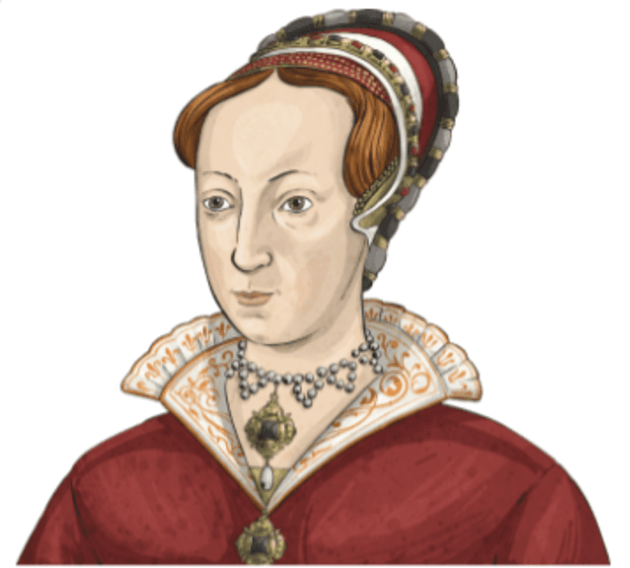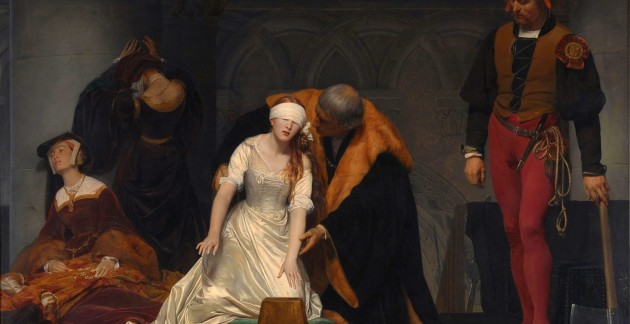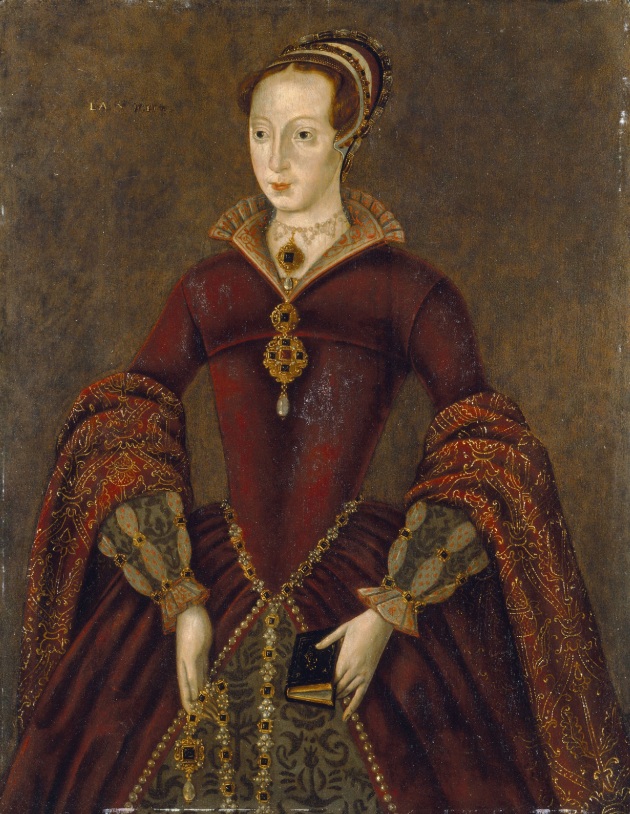Lady Jane Grey
Lady Jane Grey was the cousin of Mary I, daughter of Henry VIII. She briefly ruled as Queen of England for nine days after the death of Edward VI.

Lady Jane Grey was the great-granddaughter of Henry VII, and the daughter of Mary Tudor, Henry VIII‘s younger sister. Henry VIII’s son Edward VI wrote in his will that Lady Jane Grey should become Queen of England after his death. He did this because Lady Jane Grey was a Protestant, like Edward and his father, whereas Edward’s half-sister Mary was a Catholic.
Lady Jane Grey was proclaimed Queen on the 10th of July 1553 after the death of Edward VI. Although she initially had the support of the Privy Council of England, many of her supporters abandoned her when support for Mary began to grow. On the 19th July 1553, the Privy Council deposed Jane and declared Mary to be Queen instead. This has led Lady Jane Grey to be called the ‘Nine Day Queen‘.
Why was Lady Jane Grey named as Edward VI’s successor?
Edward VI was a Protestant, as he and his father Henry VIII had founded the Church of England following England’s split from the Catholic church during Henry’s reign. Edward wanted to ensure that England remained Protestant and did not go back to Catholicism, as he himself had been raised as a Protestant.
 Edward knew that his half-sister Mary, who was herself a Catholic, would turn England Catholic again. Edward decided to choose a successor who he knew to be Protestant, and Lady Jane Grey seemed to be a prime candidate. Edward did not want Mary to reverse the work that he and his father had done, so he supported Lady Jane Grey as his successor and even changed his wills to ensure that she would be Queen.
Edward knew that his half-sister Mary, who was herself a Catholic, would turn England Catholic again. Edward decided to choose a successor who he knew to be Protestant, and Lady Jane Grey seemed to be a prime candidate. Edward did not want Mary to reverse the work that he and his father had done, so he supported Lady Jane Grey as his successor and even changed his wills to ensure that she would be Queen.
The then-Duke of Northumberland John Dudley, is said to have been a key player in Jane’s brief reign, as he was a close ally of Edward VI and would have benefitted greatly from having his daughter-in-law on the throne. Many people at the time thought that Dudley wanted power for himself, and this is still debated by modern historians today.
Why did Mary depose Lady Jane Grey?
 After the death of her half-brother Edward, Mary travelled to East Anglia and began building an army, demanding that she be reinstated as Queen. After the Privy Council of England changes sides to support Mary instead of Jane, the Duke of Northumberland conceded defeat, and Mary was declared the new Queen. Although both sides had armies, there was no battle, as many people now supported Mary.
After the death of her half-brother Edward, Mary travelled to East Anglia and began building an army, demanding that she be reinstated as Queen. After the Privy Council of England changes sides to support Mary instead of Jane, the Duke of Northumberland conceded defeat, and Mary was declared the new Queen. Although both sides had armies, there was no battle, as many people now supported Mary.
The reason why Mary deposed Lady Jane Grey is that, as the eldest daughter of Henry VIII, Mary believed that she was the rightful Queen of England. Due to England’s break from the Catholic faith, there was a crisis over the succession of the next monarch, and Henry’s daughters Mary and Elizabeth were briefly removed from the lineage. However, they later had their status as heirs to the throne restored.
What happened to Lady Jane Grey?
 After she was deposed, Lady Jane Grey and many of her supporters were put on trial for treason, and sentenced to death. However, Mary initially wanted to spare Lady Jane Grey, but her father later joined a rebellion against the Queen which changed Mary’s mind.
After she was deposed, Lady Jane Grey and many of her supporters were put on trial for treason, and sentenced to death. However, Mary initially wanted to spare Lady Jane Grey, but her father later joined a rebellion against the Queen which changed Mary’s mind.
Lady Jane Grey was executed on the 12th of February 1554, after refusing to renounce her Protestant faith. During the reign of Queen Mary, many Protestants came to see Lady Jane Grey as a martyr, and she has since been the subject of many romantic poems, stories, operas, paintings, novels and films.
Lady Jane Grey facts
 Lady Jane Grey was just 16 years old at the time of her death.
Lady Jane Grey was just 16 years old at the time of her death.- Lady Jane Grey is remembered as the monarch with the shortest reign, at just nine days.
- Lady Jane Grey’s husband, Lord Guildford Dudley, was executed on the same day as she was.
- Lady Jane Grey was said to be very intelligent, and she was fluent in French and Italian.
- Lady Jane Grey’s father, the Duke of Suffolk, was executed just 11 days after her death.
Extracted from twinkl.fr
